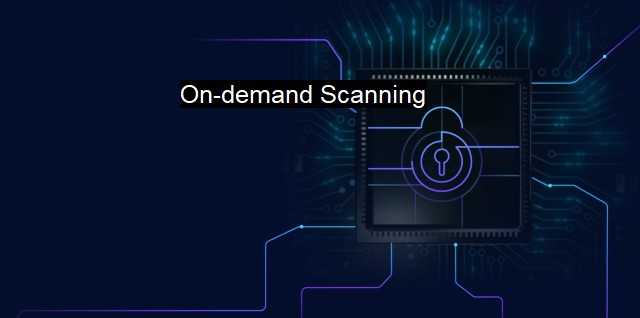What is On-demand Scanning?
The Vital Role of On-Demand Scanning in Modern Security Protocols: How Antivirus Software Detects and Mitigates Malware
"On-demand Scanning" is a terminology commonly used in the field of cybersecurity and it pertains specifically to the field of antivirus protection for computing. With the exponential burst of digital transformation comes a parallel increase in the threats that endanger the safety and security of digital systems. Malware, ransom ware, viruses and hackers pose considerable threats to digital security. Quite aptly, various antivirus software tools and systems have been created not only to counter these threats but also stay one step ahead in predicting and preventing a potential attack. One of these techniques or a mode of functioning for antivirus software tools is on-demand scanning.On-demand scanning is basically the manual scanning mode where the users manually perform a scan session. Instead of running in the multiple layers of computer systems continuously and being always active or alert, the antivirus software waits for the users input or instruction to carry out a complete or selective scanning. On-demand scanning is used when users suspect the presence of a virus or malware in certain files or folders. It is typically known for its thoroughness, leaving no stone unturned.
On-demand scanning can be done for files, documents, folders, drives, or even the entire computing system. It probes into the deeper parts of the computer which aren't always necessary for routine scans. Owing to its comprehensive nature, it invariably takes a longer period of time to complete the entire scan.
It is beneficial at multiple levels. One of the prime advantages of on-demand scanning is that it provides a thorough check of all files and folders. It combs through each and every file more meticulously than regular, scheduled scans. This means that even the stealthy and hidden viruses which may sometimes evade regular automatic scans do not escape in an on-demand scan.
Regular scans may not delve deep into compressed or archived files. On-demand scanning explores these and does so in a strategic and structured fashion. It works algorithmically, analyzing files and data, checking them against known examples of threats, and making logical deductions about whether they pose any danger to the system.
On-demand scanning also comes with its share of downsides, most notable among them is the amount of time it consumes to perform such a thorough system check. heavy on-demand scans might slow down the system or hinder other tasks carrying on simultaneously in the computer. Given its detailed nature, on-demand scans require a stupendous amount of computational resources.
To balance the advantages and disadvantages, many users and companies choose a blend of regular antivirus monitoring and scheduled browse through, complemented with occasional on-demand scanning when required or suspected threat. The precise ratio or combination depends significantly on the level of threat perception, criticality of data, size of data and specific user preferences and system limitations.
In today's digitized environment, there have been remarkable advancements in the technology driving antivirus software. Artificial intelligence, the cloud service model, and machine learning are common and significantly revising what's possible in this space.
Even with futuristic technologies popping up incessantly, the exhaustive detection capability of on-demand scanning puts it as a timeless fundamental within the toolbox of cybersecurity protection measures. As long software remains susceptible to bugs, and hardware to illicit intrusions, on-demand scanning will always be a powerful weapon in the arsenal of cybersecurity tools.

On-demand Scanning FAQs
What is on-demand scanning?
On-demand scanning is a cybersecurity tool that allows users to scan and check their digital files, folders, and drives for any viruses or malware threats. This scanning method is different from real-time scanning, as users initiate the scan at their convenience rather than having the software continuously monitor for threats.How does on-demand scanning differ from real-time scanning?
The primary difference between on-demand scanning and real-time scanning is the timing of when a scan takes place. On-demand scanning is initiated by the user, while real-time scanning operates in the background and continuously scans for threats in real-time. Real-time scanning is more proactive and preventative, while on-demand scanning is more reactive and used to identify and remove existing threats.When should I use on-demand scanning?
On-demand scanning should be used when you suspect that your device or files may have been infected by malware or viruses, or if you want to perform a routine check for any potential threats. It can also be used alongside real-time scanning for added security.What are the benefits of on-demand scanning?
The benefits of on-demand scanning include the ability to quickly check for and remove any existing threats, the flexibility to choose when to run scans, and the ability to customize the scanning settings to meet specific needs. Additionally, on-demand scanning can provide peace of mind and confidence in the security of your device and files.| | A | | | B | | | C | | | D | | | E | | | F | | | G | | | H | | | I | | | J | | | K | | | L | | | M | |
| | N | | | O | | | P | | | Q | | | R | | | S | | | T | | | U | | | V | | | W | | | X | | | Y | | | Z | |
| | 1 | | | 2 | | | 3 | | | 4 | | | 7 | | | 8 | | |||||||